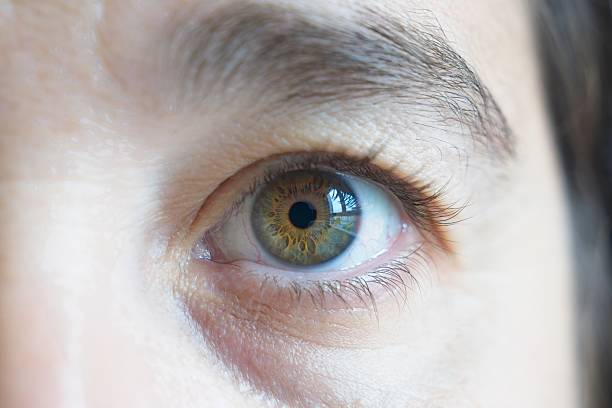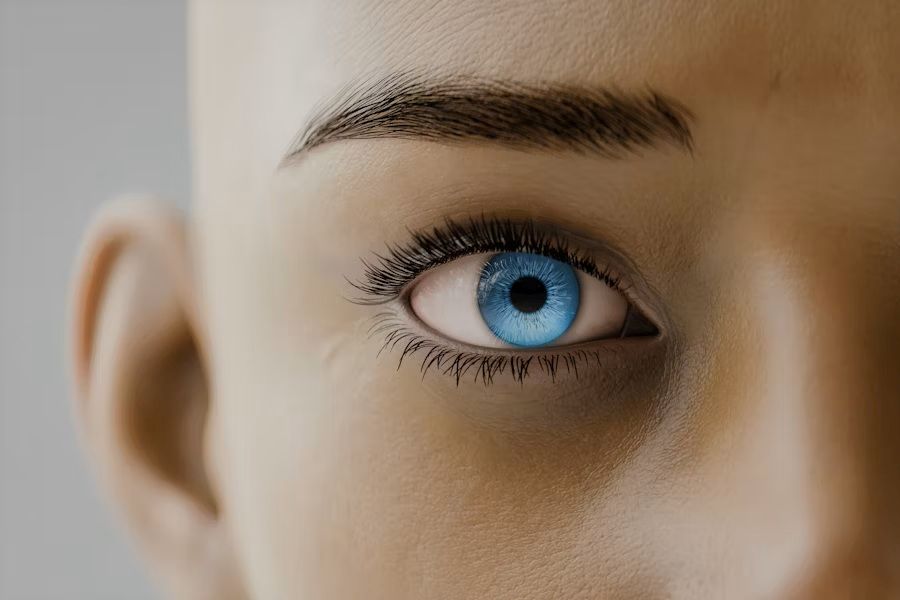Your Cart is Empty
The Most Attractive Eye Colors: Unveiling Nature's Mesmerizing Hues

Eye color is one of the most captivating aspects of human appearance, with a wide range of hues that fascinate and intrigue. In this article, we will explore the most attractive eye colors, their genetic origins, and the cultural significance they hold.
The Genetics Behind Eye Color
Understanding the genetic factors that determine eye color is crucial to appreciating the diversity of hues we observe. Eye color is primarily determined by the amount and type of pigments in the iris, with melanin playing a key role. The more melanin present, the darker the eye color.
Eye color is influenced by multiple genes, particularly OCA2 and HERC2. These genes interact in complex ways to produce the spectrum of eye colors we see. Interestingly, eye color can change over time due to factors like age and health conditions.
For instance, newborns often have blue or gray eyes, which may darken as melanin production increases, especially in individuals of European descent. Certain diseases and medications can also alter eye color, making it a dynamic trait.
Blue Eyes: The Rarest and Most Desired

Blue eyes are often considered the most alluring and rarest of all eye colors. They result from low melanin levels and the scattering of light in the stroma, known as the Tyndall effect. This scattering creates the blue appearance.
Throughout history, blue eyes have been surrounded by myths and legends. Ancient Greeks believed that blue-eyed individuals possessed supernatural powers. In modern times, blue eyes are often associated with beauty and attractiveness.
Famous personalities with blue eyes, such as Paul Newman and Taylor Swift, have significantly impacted popular culture. Their striking blue eyes have become iconic, further enhancing the allure of this eye color.
Green Eyes: The Enigmatic and Exotic

Green eyes are among the most mysterious and exotic eye colors. They result from a moderate amount of melanin and the presence of a yellowish pigment called lipochrome. This combination creates the unique green hue.
Green eyes are often considered exotic due to their rarity. They are most commonly found in individuals of Celtic and Germanic ancestry. The enigmatic nature of green eyes has made them a subject of fascination in various cultures.
Notable individuals with green eyes, such as Scarlett Johansson and Joaquin Phoenix, have captivated audiences with their striking appearance. Their green eyes add to their enigmatic charm, making them stand out in the world of entertainment.
Hazel Eyes: The Best of Both Worlds

Hazel eyes are a captivating blend of multiple colors, often appearing as a mix of brown, green, and gold. This unique combination results from varying levels of melanin and the scattering of light in the iris.
One of the most intriguing aspects of hazel eyes is their versatility. They can appear to change color depending on lighting conditions and clothing. This chameleon-like quality makes hazel eyes particularly attractive and intriguing.
Factors such as mood, weather, and even the color of one's surroundings can influence the appearance of hazel eyes. This dynamic nature adds to their appeal, making hazel-eyed individuals stand out in any crowd.
Brown Eyes: The Most Common Yet Captivating

Brown eyes are the most common eye color worldwide, yet they possess a rich and captivating beauty. The abundance of melanin in the iris gives brown eyes their warm, deep tones.
Brown eyes hold significant cultural importance in various societies. In many cultures, brown eyes are associated with strength, reliability, and wisdom. They are often seen as a symbol of trustworthiness and stability.
In media and literature, brown-eyed characters are frequently portrayed as dependable and grounded. This representation reflects the cultural perception of brown eyes as a sign of inner strength and resilience.
Gray Eyes: The Mysterious and Rare

Gray eyes are among the rarest and most mysterious eye colors. They result from a low amount of melanin and the scattering of light in the iris. Gray eyes can appear to change color under different lighting conditions, adding to their mystique.
The genetic basis of gray eyes is not entirely understood, making them a subject of scientific curiosity. They are most commonly found in individuals of Northern and Eastern European descent.
Famous figures with gray eyes, such as Daniel Craig and Meryl Streep, have contributed to the allure of this eye color. Their gray eyes add a touch of mystery and sophistication to their appearance.
Amber Eyes: The Golden Gaze

Amber eyes are a unique and striking eye color, characterized by a golden or coppery hue. This eye color results from the presence of lipochrome, a yellowish pigment, in the iris.
Amber eyes are often associated with animals, such as wolves and eagles, which share this eye color. This connection to the animal kingdom adds to the perception of amber eyes as wild and untamed.
In various cultures, amber eyes are seen as a symbol of courage and strength. They are often associated with individuals who possess a fierce and independent spirit.
In some South American cultures, amber eyes are also regarded as the eyes of God, representing sacred and inviolable power. If you like the amber eyes known as the "eyes of God", why not customize eye-shaped pins yourself?
You can choose the material and size of the pins according to your preferences to create personalized pins unique to you. Custom Pins are not only decorative but also collectible. You can pin the pins on clothes and bags as embellishment and decoration, or you can collect the pins as souvenirs.
Unusual Eye Colors: Red, Violet, and Heterochromia

Beyond the common eye colors, there are some truly unusual and rare hues. Red and violet eyes, for example, are typically the result of albinism, a condition characterized by a lack of melanin. The absence of pigment allows blood vessels to show through, giving the eyes a red or violet appearance.
Heterochromia, a condition where an individual has two different colored eyes, is another fascinating phenomenon. It can be caused by genetic factors, injury, or disease. Notable individuals with heterochromia, such as David Bowie, have made this condition a unique and captivating trait.
Final Thoughts
Eye color is more than just a physical trait; it is a window into our genetic makeup and cultural heritage. The diversity of eye colors adds to the richness of human appearance, making each individual unique.
From the rare and coveted blue eyes to the common yet captivating brown eyes, every eye color has its own allure. The genetic factors that determine eye color are complex and fascinating, reflecting the intricate nature of human biology.
As we continue to explore and understand the science behind eye color, we gain a deeper appreciation for the beauty and diversity of the human race. Each eye color, with its unique characteristics and cultural significance, contributes to the tapestry of human identity.
1 Response
Leave a comment
Comments will be approved before showing up.





CleJay
December 13, 2025
Blue eyes are rare? Everywhere you look people have blue eyes!